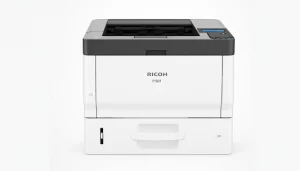Efficient office solutions: Integrated systems for printing, document management and more
The modern working world is characterized by constant pressure to increase efficiency. Companies are faced with the challenge of designing their offices in such a way that resources are used optimally. In this context, integrated office solutions are of central importance. By implementing integrated office efficiency-Systems for printing, document management and related services can help companies reduce costs, increase productivity and improve team collaboration.
What are integrated office solutions?
Integrated office solutions refer to the application of technologies and systems that bring together various office processes. These systems typically include:
- printing systems
- document management systems (DMS)
- archiving and retrieval solutions
- workflow management tools
By integrating these systems, companies can not only save time, but also integrated office efficiency For example, a modern DMS enables central storage and immediate access to documents, which greatly simplifies the search and management of information.
Advantages of integrated office solutions
1. Cost reduction
A key benefit of integrated office solutions is the savings in operating costs. By bundling printing and document management services, companies can significantly reduce their expenses. According to a study by Xerox, companies can save up to 301,000 euros in printing costs by optimizing their printing infrastructure.
2. Improving productivity
Integrated systems help reduce the time employees spend managing documents and print jobs. Tools that automate workflow processes ensure that documents are processed quickly, increasing the overall speed of work. A study by Salesforce shows that companies that use document management systems can see productivity increases of up to 40%.
3. Simplified collaboration
By providing centralized platforms for document sharing, integrated office solutions promote collaboration within teams. Employees can work on documents in real time, which leads to greater efficiency and improves communication. The use of specific tools, such as Microsoft Teams, shows that seamless integration can significantly improve team dynamics.
Components of an effective integrated office solution
1. Printing systems
Choosing the right printing systems is a crucial factor for integrated office efficiency. Modern printers, such as the Ricoh SP 4520DN, offer not only outstanding print quality, but also cost control features and technology to reduce paper consumption. Managing these print jobs via a central interface helps to keep track of everything and allocate resources better.
2. Document management systems
A DMS is essential for systematically organizing and storing documents. An effective DMS enables companies to easily store, find and share documents, resulting in less stress and more efficiency. Systems such as DocuWare or SharePoint offer comprehensive features to integrated office efficiency to maximize.


3. Archiving solutions
Archiving documents is an essential process that poses major challenges for many companies. Unreported figures show that up to 60% of documents are disorganized and difficult to find. Integrated archiving solutions ensure that every scrap of paper and every digital document is correctly categorized and easily accessible. Electronic archiving also ensures compliance with legal requirements.
4. Workflow management tools
These tools are particularly useful for automating complex processes. Software solutions such as Monday.com or Trello can help assign tasks and monitor progress in real time, increasing transparency and encouraging collaboration. integrated office efficiency in a company has increased significantly.
case studies of successful integrations
1. Case study: A financial services provider
A large financial services provider implemented an integrated printing and document management system, resulting in a 25% reduction in costs. By implementing the DMS, important documents could be accessed within minutes, which previously took hours.
Additionally, training was provided to employees to ensure they were able to make the most of the new systems. This not only boosted productivity but also increased employee satisfaction through a more pleasant working environment.
2. Case study: A medium-sized company
A medium-sized company in the mechanical engineering sector decided to optimise its business processes by introducing integrated office solutions. After switching to a modern document management system and efficient printing solutions, such as the Lexmark 50F0Z00, it was able to achieve an increase in working speed of 35% within six months.
Integration and Flexibility in the Cloud
The cloud-based integration of document management and printing systems brings an additional dimension to increased efficiency. With the ability to access documents from any location and control print jobs via the Internet, mobility in the working environment is revolutionized. Cloud technologies also make it possible to optimize storage space and ensure the security of company data.
challenges in implementation
Despite the obvious benefits, challenges often arise when implementing integrated office solutions:
- Employee resistance to change: Training and acceptance of new systems can be difficult.
- Technological requirements: The need to adapt or replace existing systems can be financially burdensome.
- Data security: The integration of new systems must always take into account the security of sensitive data.
To overcome these challenges, a structured implementation plan is necessary that includes not only technical aspects but also training and support measures for employees.
Conclusion
Integrated office solutions not only create a better structure within companies, they also contribute significantly to integrated office efficiency By combining printing systems, document management and workflow tools, companies can reduce their costs and increase productivity. The real examples and case studies presented show that the use of modern technologies is not only sensible, but necessary for competitiveness in the digital age.














